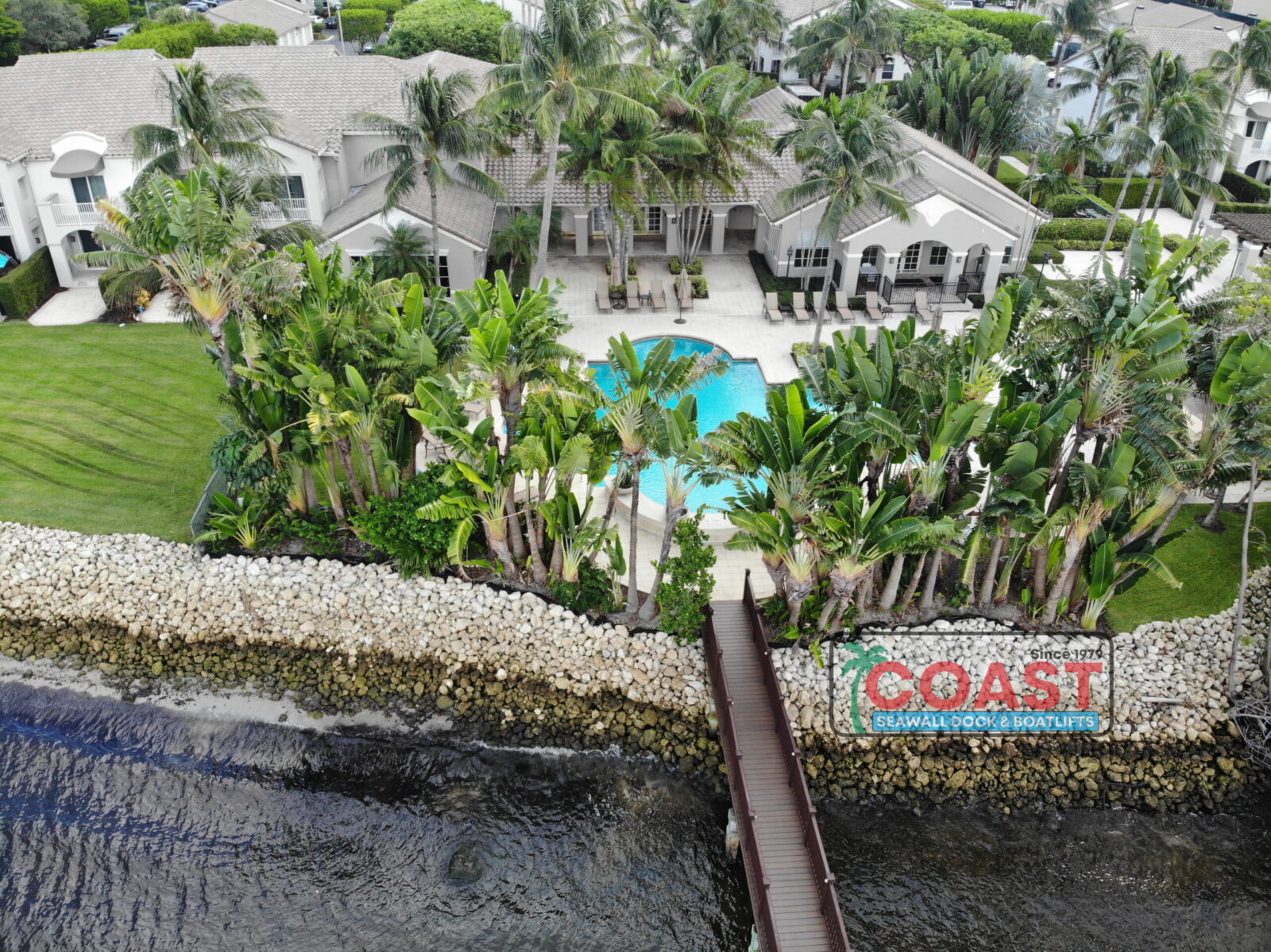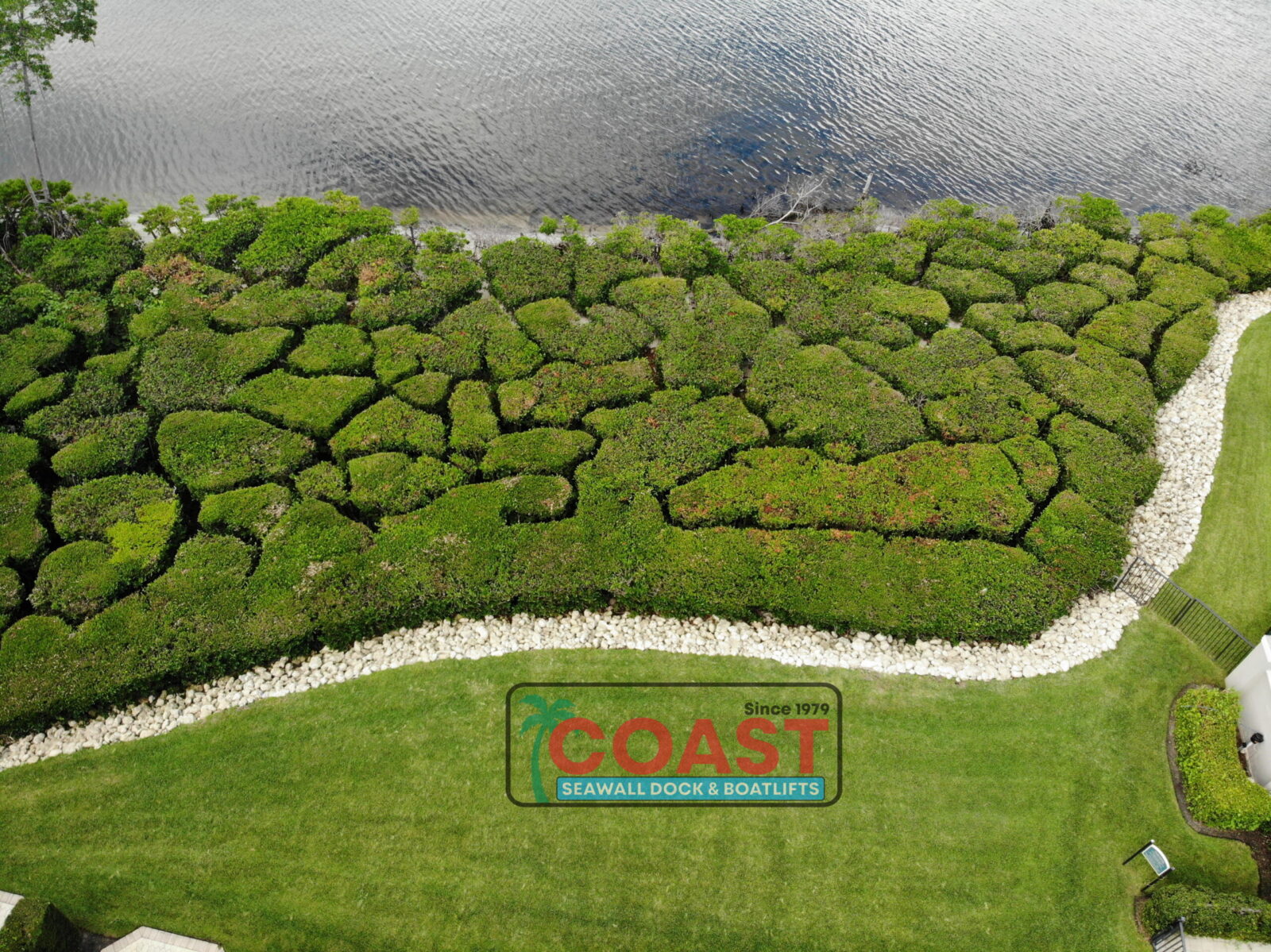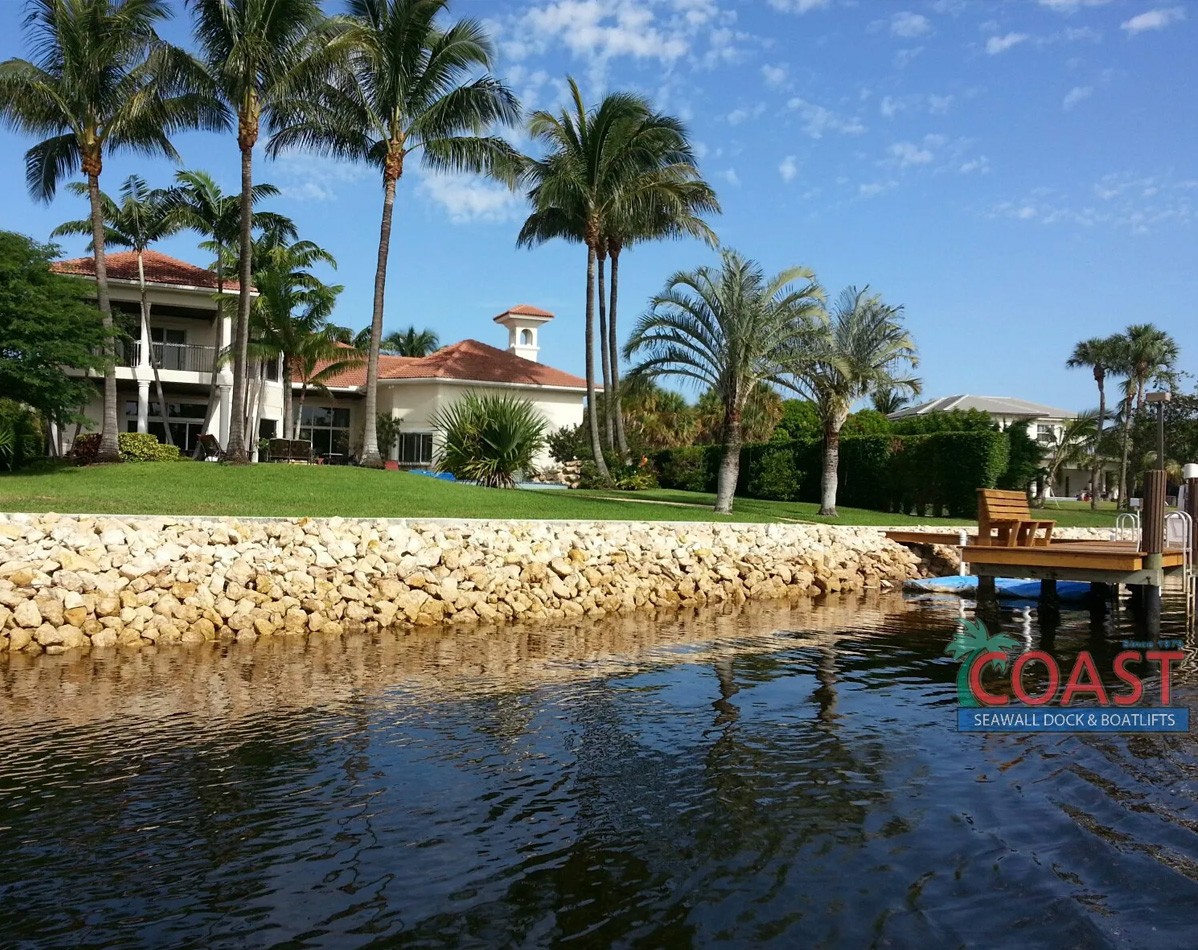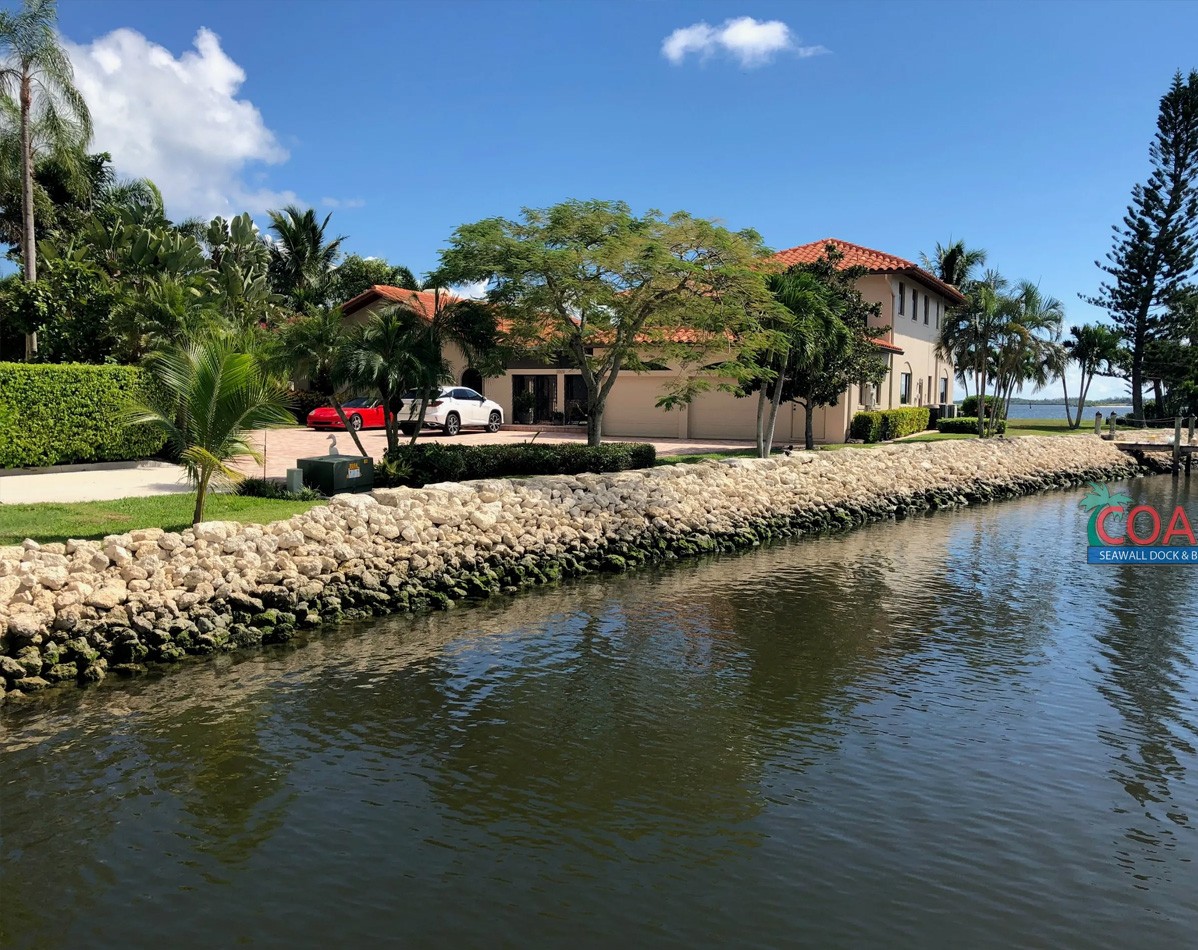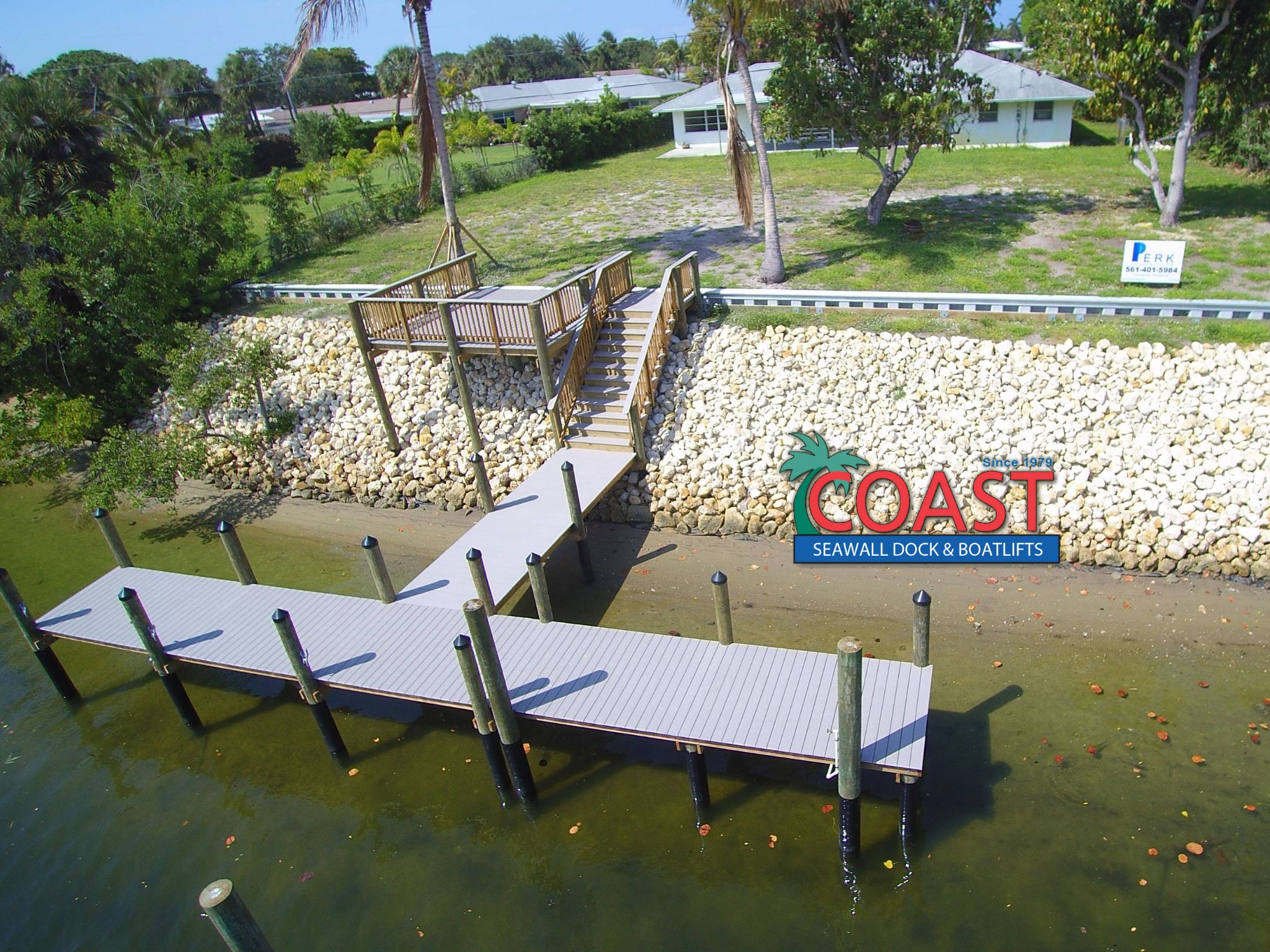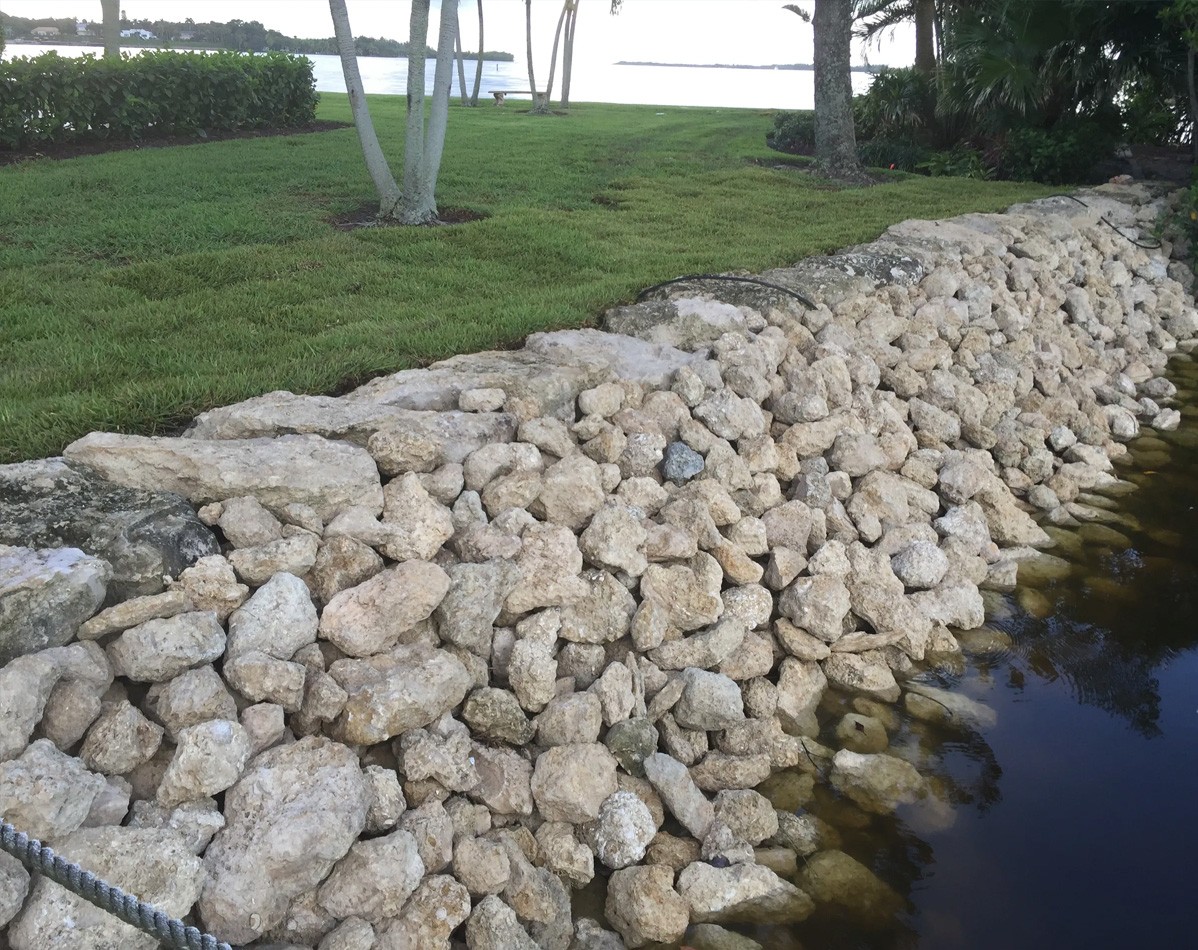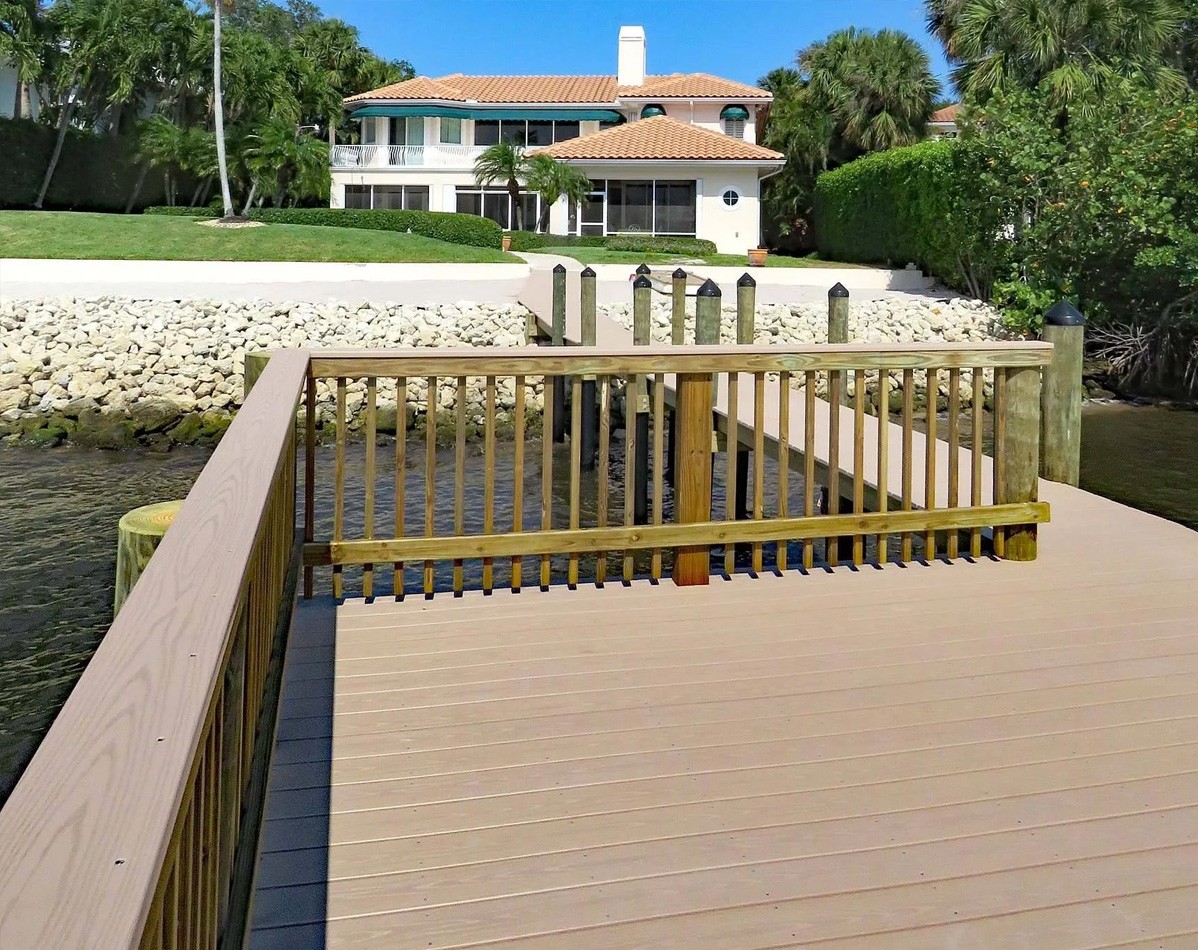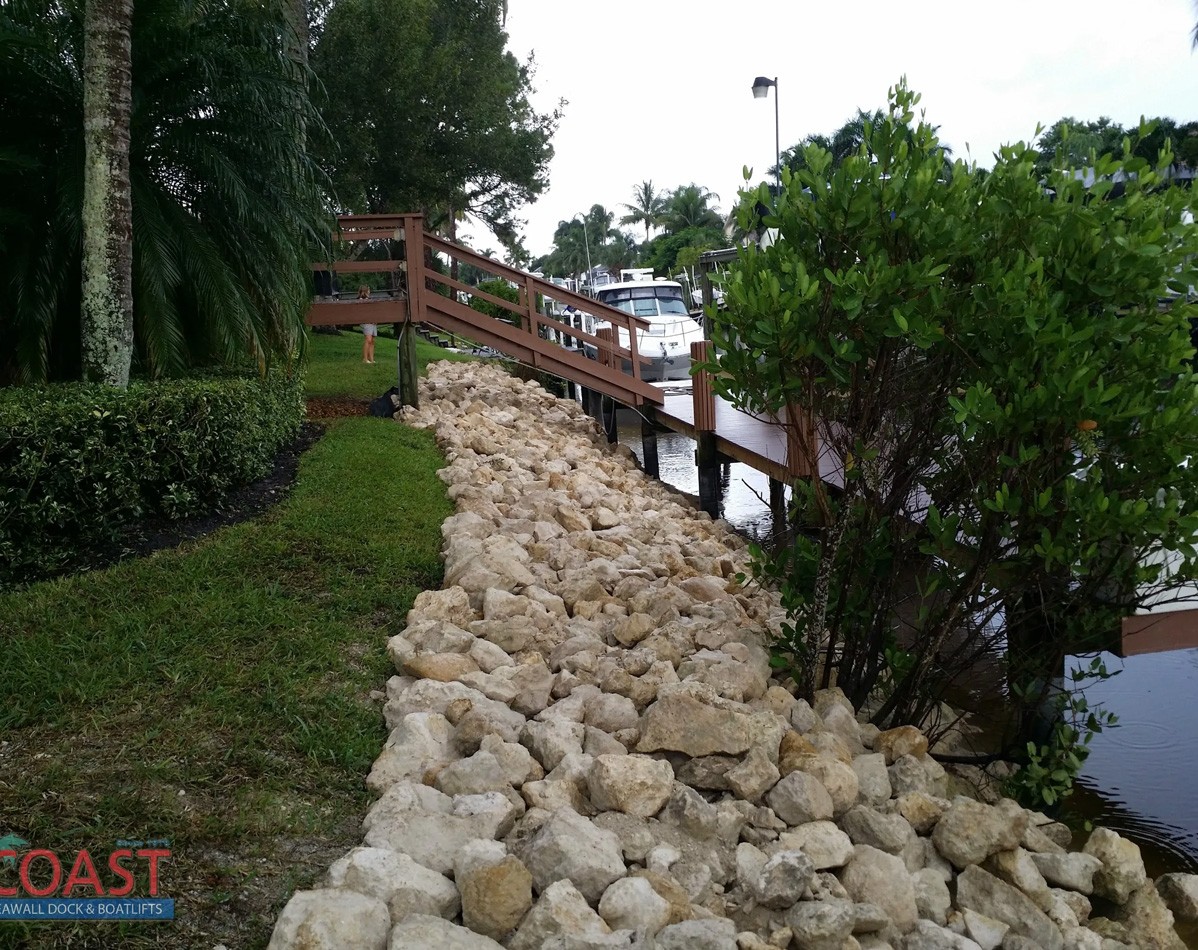Rock RevetmentS
Contact Now
Coast Seawall Dock & Boatlifts has over 45 years of experience in installing rock revetments (rip rap) as stand-alone seawalls, or as reinforcement in front of an existing aluminum, concrete, wood, or vinyl seawall that has begun to fail.
Rock revetments are a cost-effective, aesthetically pleasing, and environmentally friendly way to repair and maintain the integrity of your seawall.
Not only is a rock revetment used as a stand-alone seawall, and reinforcement to an existing seawall, but is also used as a retaining wall in gabions, or as a jetty. Whatever your need, Coast Seawall Dock & Boatlifts will take great care to preserve your valuable waterfront property.
What is rock revetment or rip-rap?
Rock revetment, also known as rip-rap, is a natural, environmentally-friendly solution to protect a property’s shoreline and to prevent erosion. Rip-rap involves the expert placement of various sized rock that creates a sloped “wall” of rock.
Rock Revetment FAQs
Now that you realize what a rock revetment is, it’s time you learn other important things related to this structure.
Rip-rap done correctly is a shoreline solution that will endure the elements much longer than the typical flat-faced seawall or bulkhead; they are often called “forever walls”.
These structures help to mitigate wave or tidal action against a property line, stop or prevent land erosion, and can even be used to support failing, older seawalls. Rip-rap is also a more ‘budget-friendly’ solution to a failing seawall or properties with no shoreline protection.
Rip-rap can be an incredible, cost-effective option for seawall replacement. In these cases, the rock revetment wall is sloped in front of a failing seawall to stop seawall movement, disperse force from wave action, and stop erosion.
A true rock revetment requires more than just dumping rocks in front of a shoreline. It requires a system that will prevent the soil, or debris, from moving through the rock. Rip-rap also demands particular slopes and, often, hand placement of the rocks in a particular manner.
You will find different types of stones and rocks used for rock pavement.
- 4 to 5 inches rip rap rock is the smallest available. It is screened down and crushed to 4 to 5 inches in size. Due to its smaller size, the rock is a good option for making a reliable and stable base. This kind of rock might be used near ditches.
- 6 to 9 inches rip rap rock is somewhat bigger and is the commonly used type of rip rap construction stone for shoreline erosion prevention. This rock is not suitable for walking on and can be utilized to discourage people from going to particular areas. Rocks in this size can also be great options for making a retaining wall.
- 9 inches rip rap rock is a bigger construction stone. They are picked for projects where land sliding or erosion is a big problem. Big rip rap rock might be placed together with areas with fast currents or places prone to high volumes of mudslides and precipitation.
Permit requirements vary depending on the municipality that the property falls under. Many local properties will require Florida Department of Environmental Protection (FDEP) permitting and possibly permission from the Army Corps of Engineers. It is important to hire a company with experience in permitting rock revetments. The location, length of shoreline, height of wall, and nearby wildlife may all have an impact on permitting.


